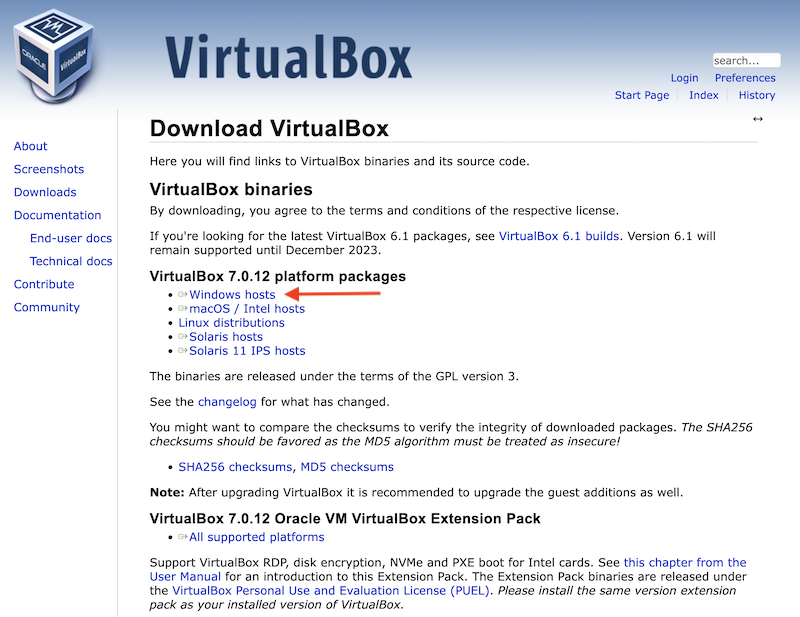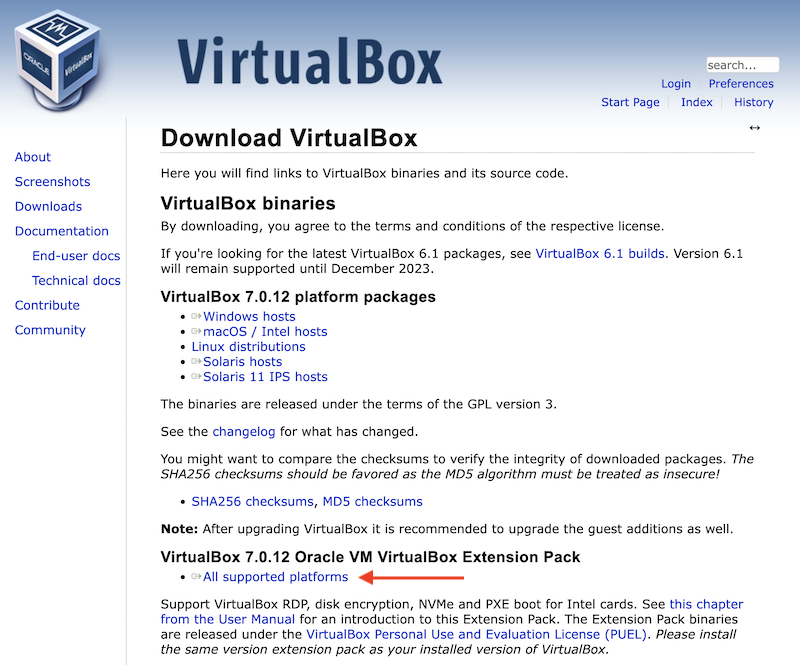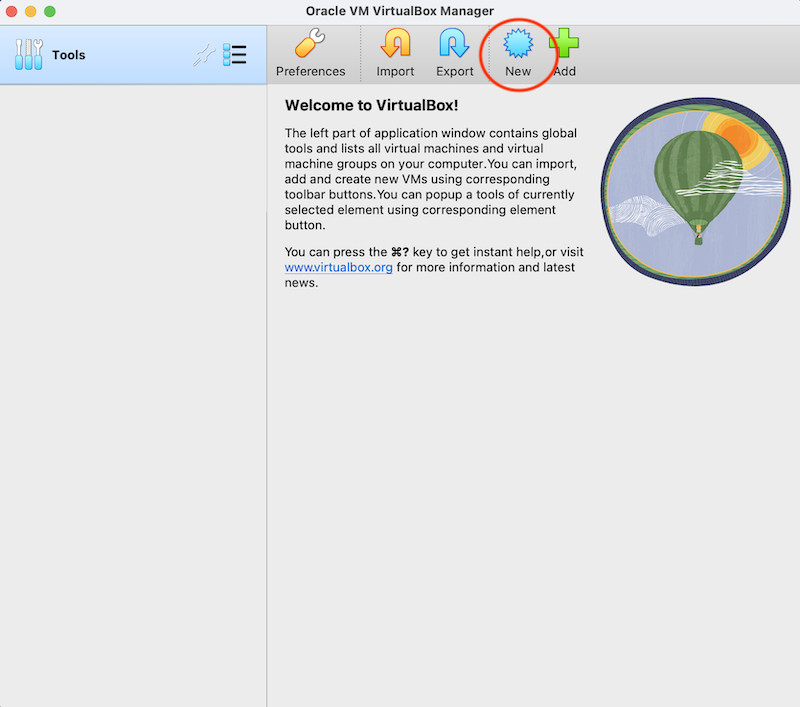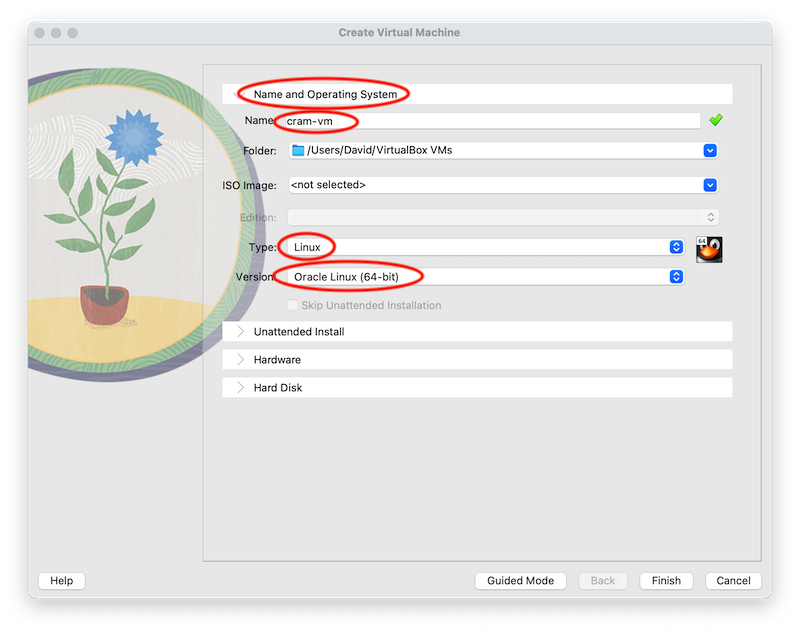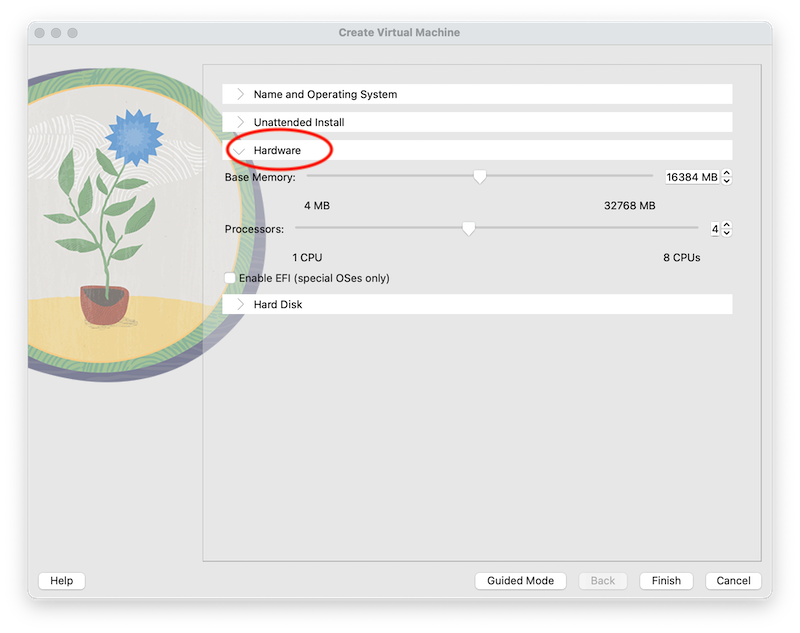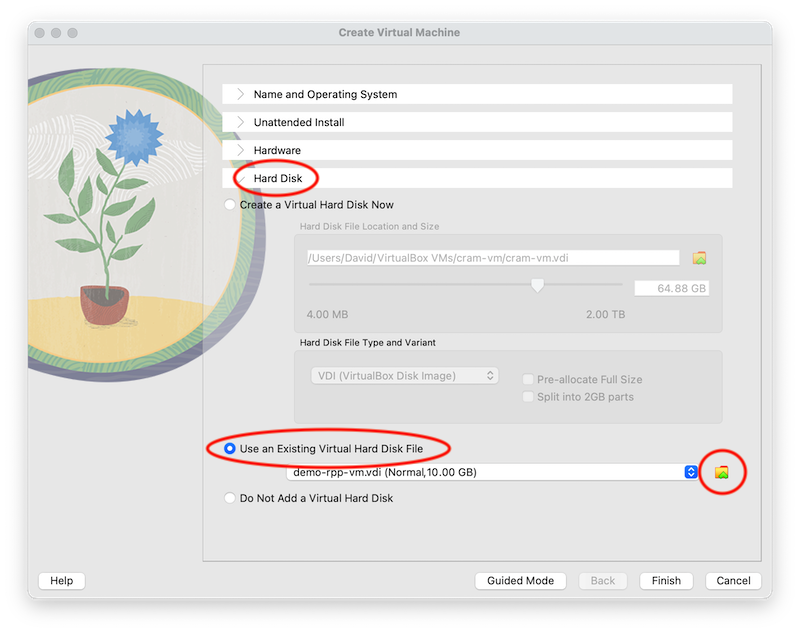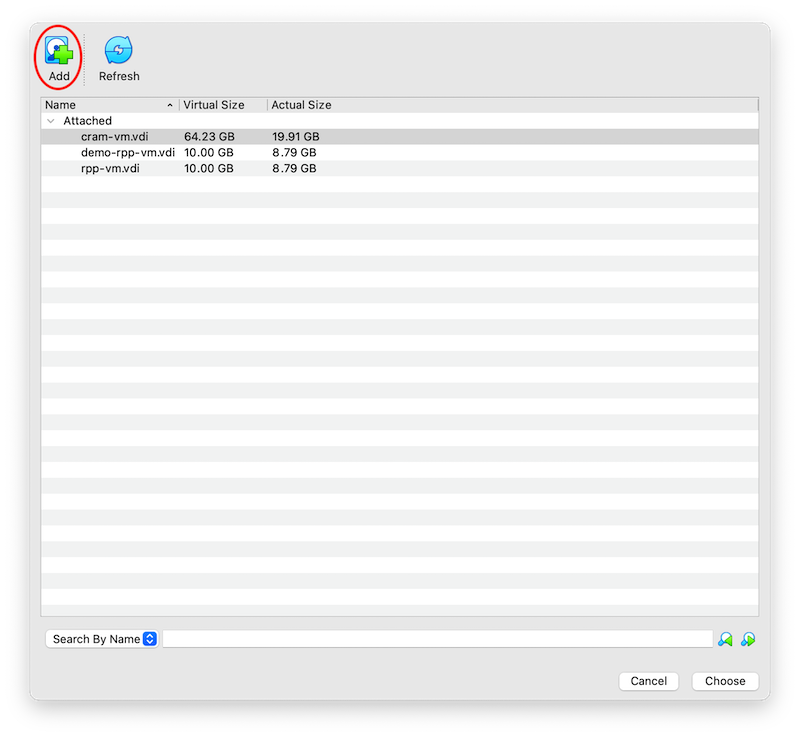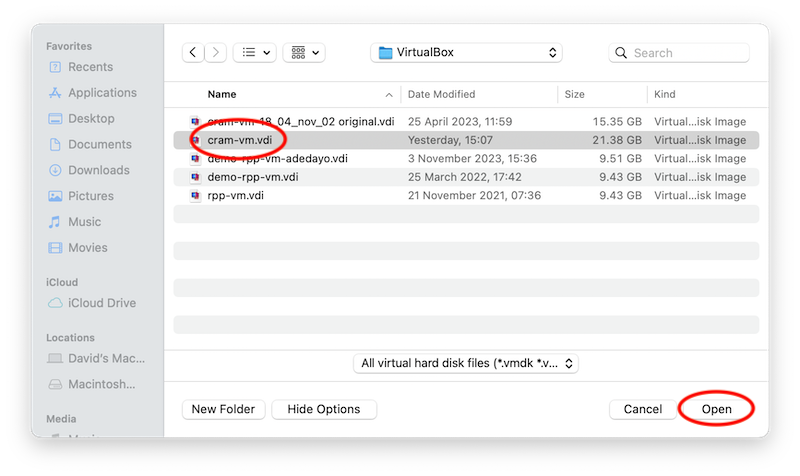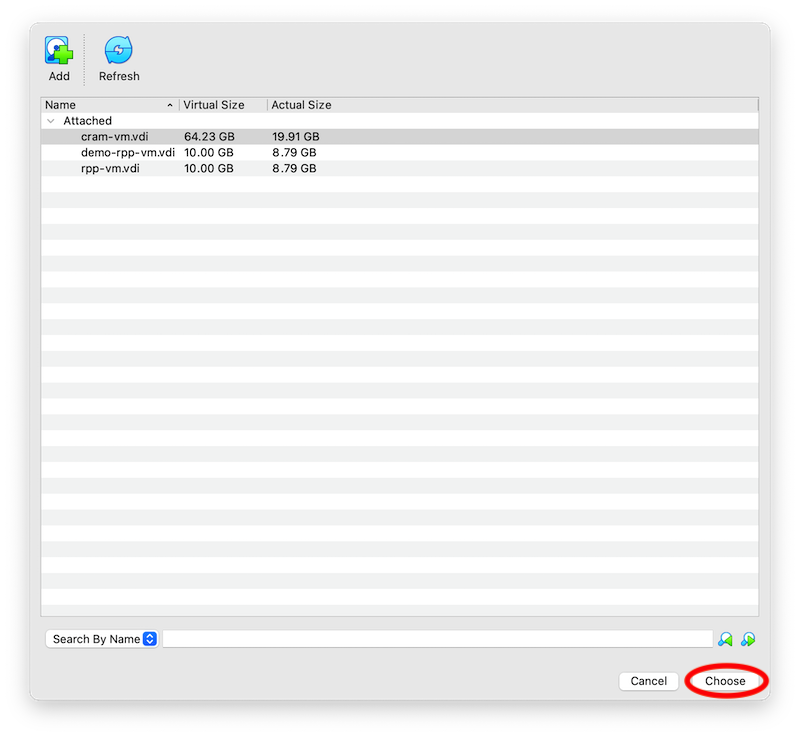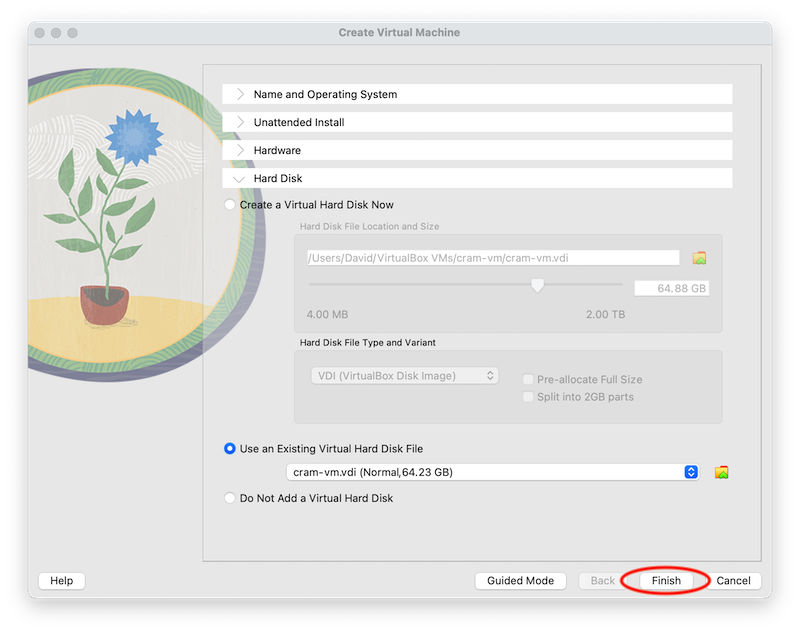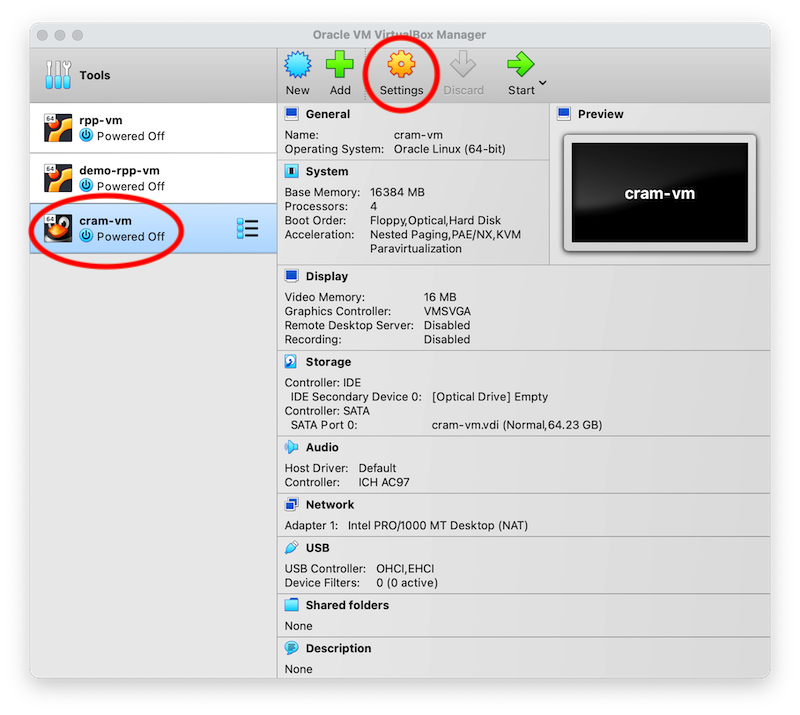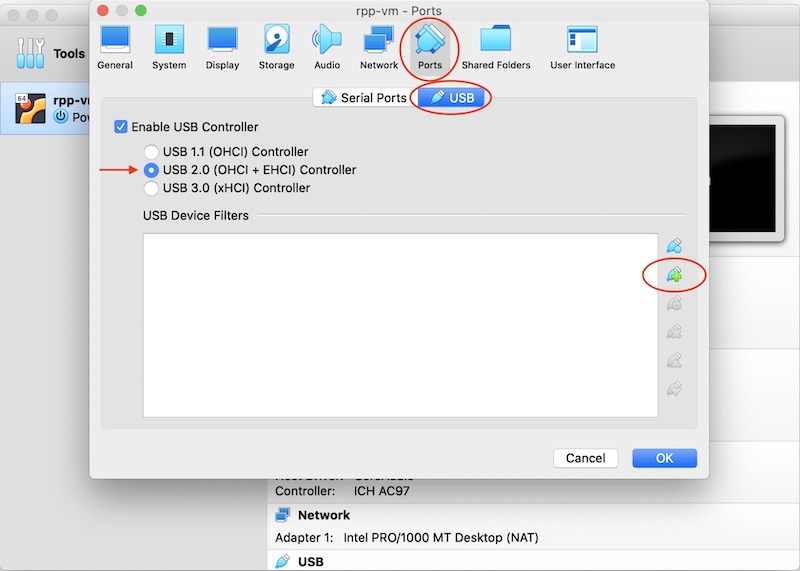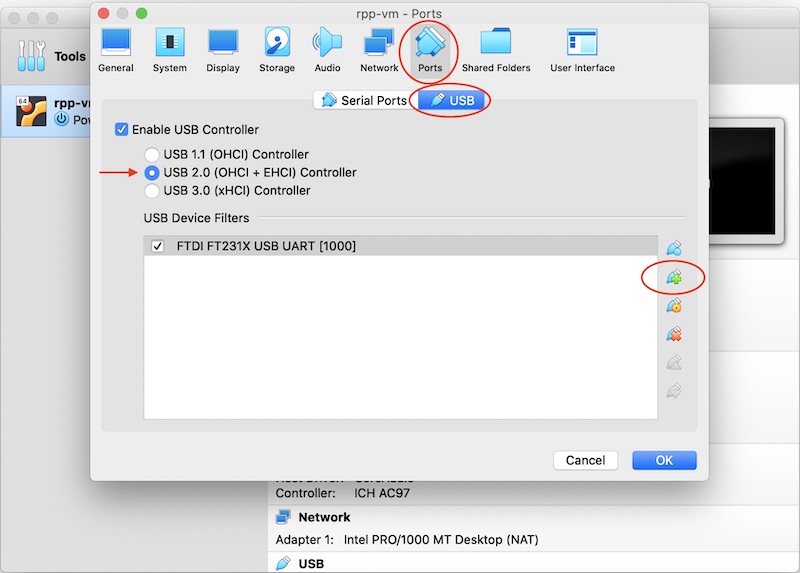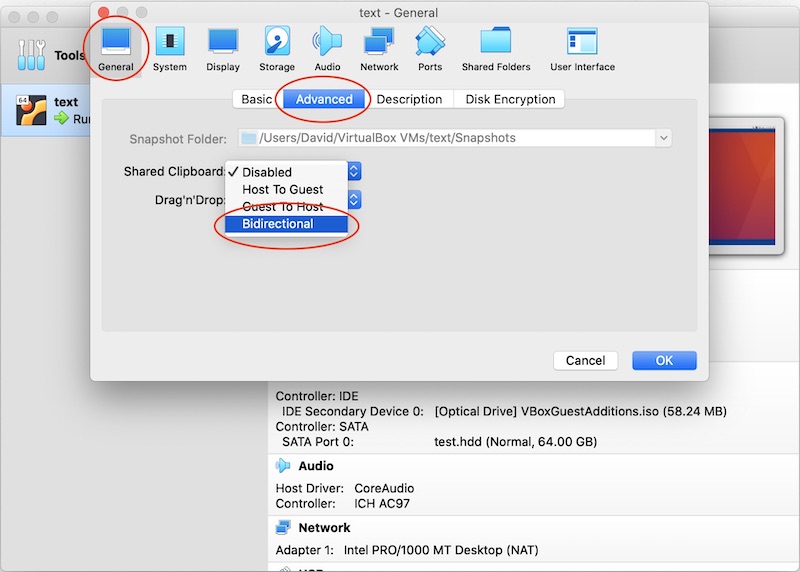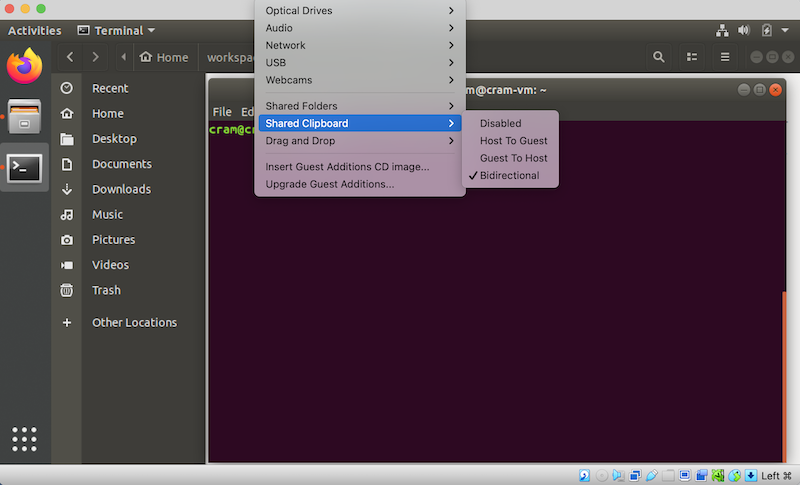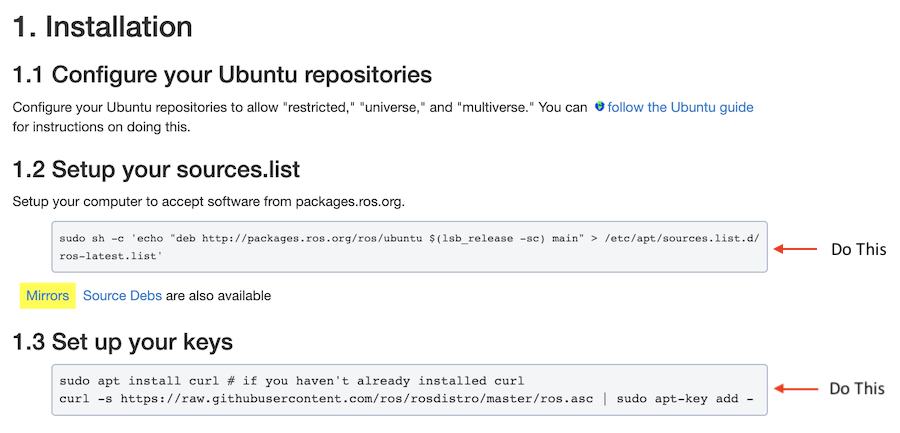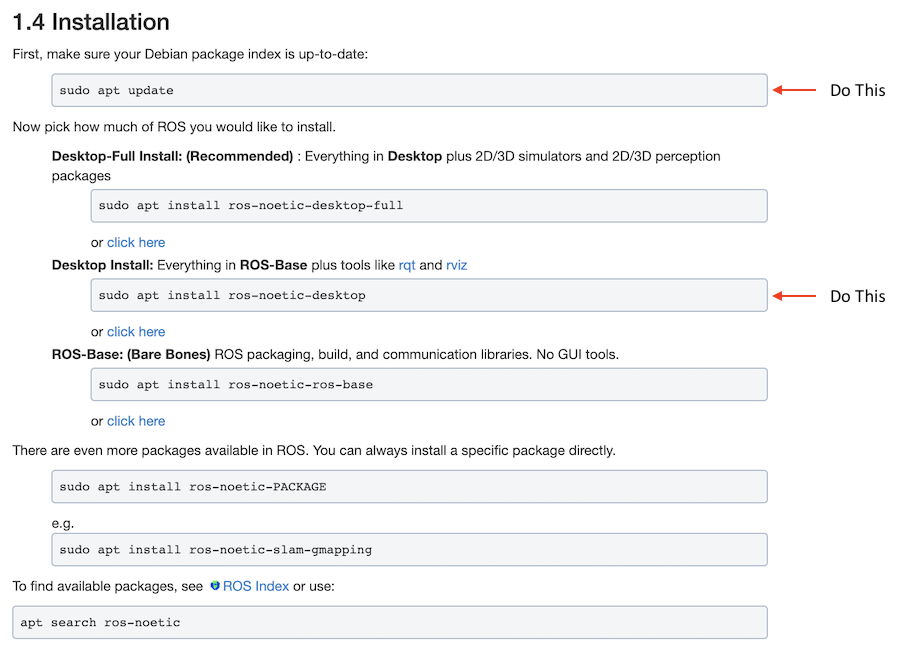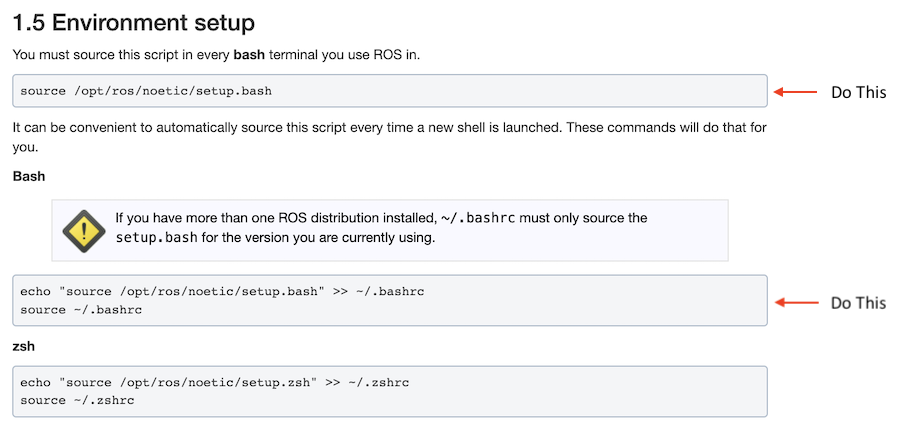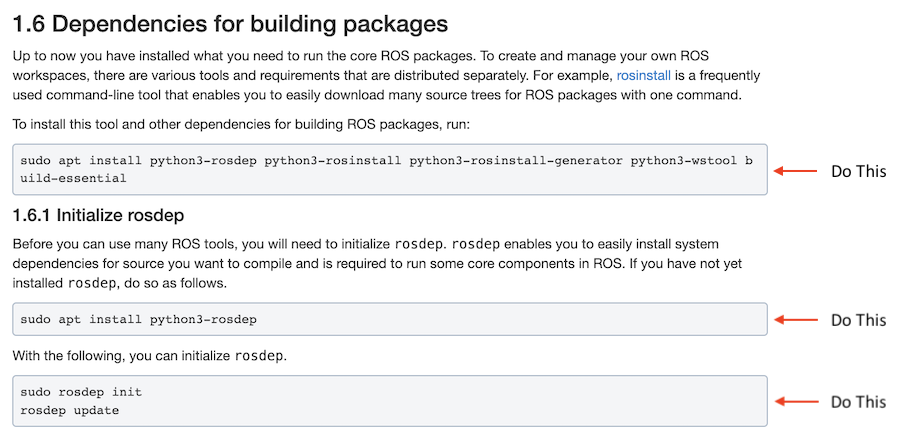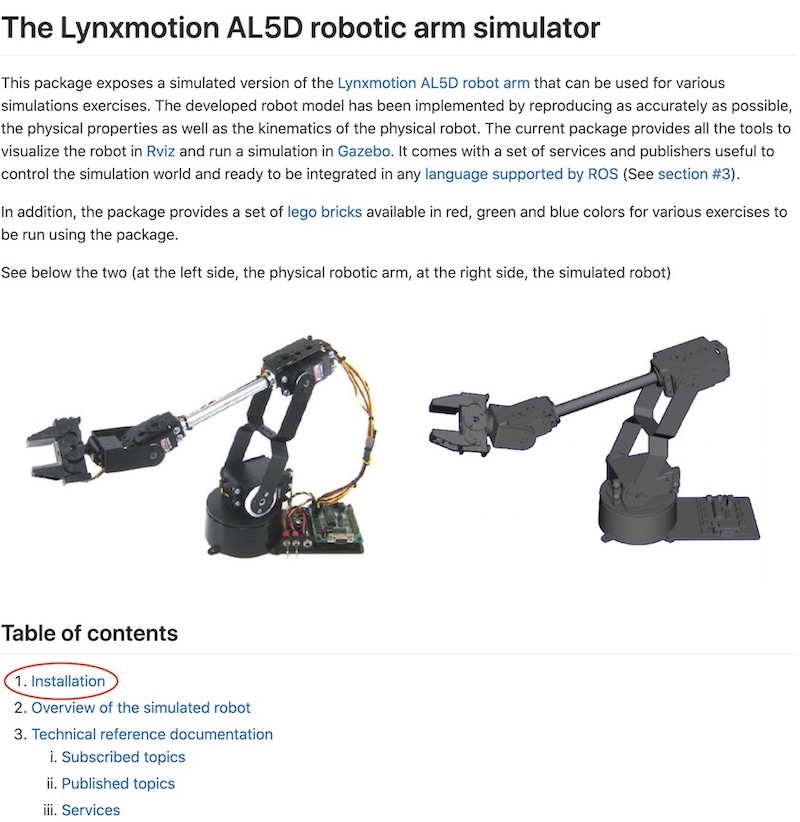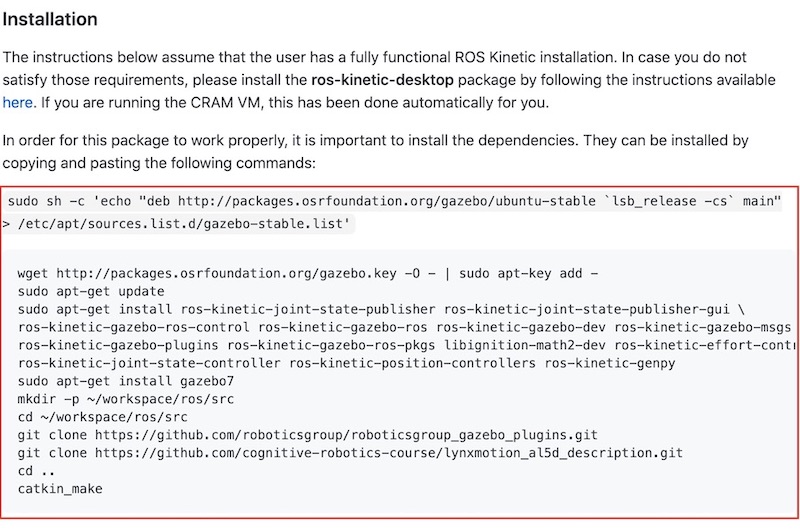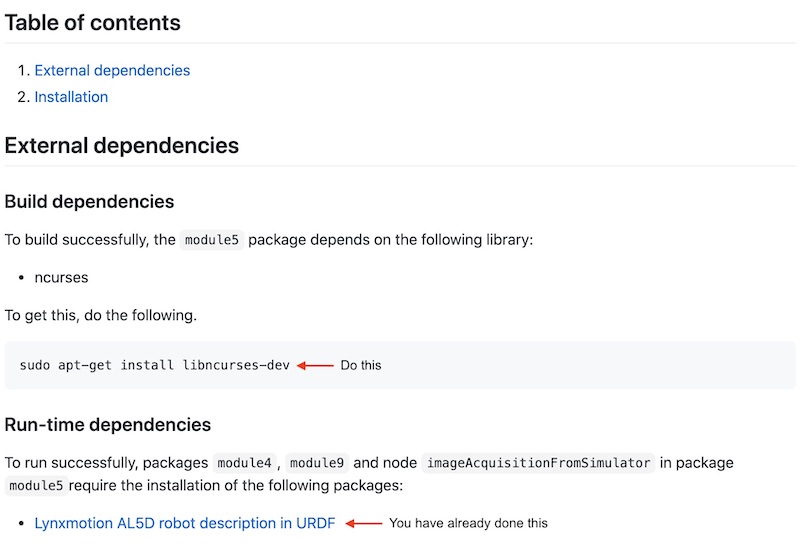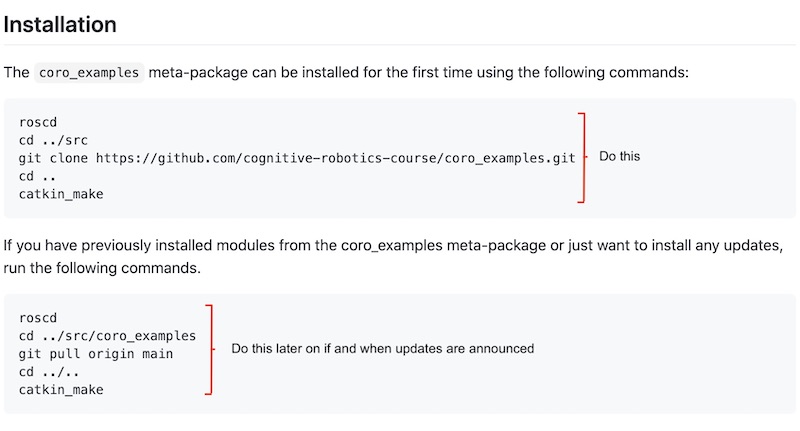Cognitive Robotics - Software Installation Guide
Contents
This page provides a step-by-step guide to installing the tools, utilities, and example software for Cognitive Robotics using Ubuntu 18.04, ROS Melodic, and the CRAM cognitive architecture.
Please follow these instructions exactly as they are stated.
Do not be tempted to skip through them, assuming that you will be able to figure it out yourself. You might, but it is more likely you will miss something small but important and it won't work as required. Take your time, follow these instructions carefully, and everything will work.
There are two options:
- Option A: install the VirtualBox Ubuntu 18.04 virtual machine (VM) with everything pre-installed.
- Option B: install all the required tools and utilities directly on a computer running Ubuntu 18.04.
We cover both in the following, starting with Option A.
Option A: Install the VirtualBox Ubuntu 18.04 Virtual Machine
Install VirtualBox
There follows instructions for Windows, Mac OS, and Ubuntu (in case you already have Ubuntu but want to use the VM instead of installing all the required tools and utilities).
Windows
Open the VirtualBox Download page at https://www.virtualbox.org/wiki/Downloads and select Windows hosts to download the installation file.
Double click on the downloaded file (VirtualBox-7.0.18-162988-Win.exe at time of writing) and follow the instructions.
MacOS
Download the .dmg installer for OS X systems, execute the file and follow the instructions.
If the VirtualBox installer fails as it is completing the installation, it is probably a problem with a security setting. Go to System Preferences > Security & Privacy. Click the lock to make changes (if necessary). Click the Allow button at the bottom and re-run the installer.
Ubuntu Linux
You can install VirtualBox via the Ubuntu Software Center or through command line as follows.
sudo apt update sudo apt install virtualbox
Install the VirtualBox Extension Pack
Select All supported platforms on the VirtualBox Download page to download the VirtualBox Extension Pack. This is needed to provide access to USB devices such as the Lynxmotion AL5D robot manipulator, iRobot Create 2 mobile robot, and webcams.
Double click on the downloaded file (Oracle_VM_VirtualBox_Extension_Pack-7.0.18.vbox-extpack at time of writing) and follow the instructions.
VirtualBox Setup
Step 1: Copy the Virtual Disk Image
The virtual disk image cram-vm.vdi contains a VirtualBox virtual machine with Ubuntu 18.04, ROS Melodic, and example code pre-installed. It will be distributed on a physical disk. Copy it to some convenient, easily-identified folder.
Step 2: Launch VirtualBox
In VirtualBox, you first need to create a new virtual machine. Click on the New button.
If a window with the guided menu open, change to expert mode.
Step 3: Create and configure the virtual machine
If it's not already open, click the Name and Operating System tab
- Set the name to cram-vm
- Select Linux for the operating system type
- Select Ubuntu (64-bit) for the operating system version
Click the Hardware tab.
- Set the VM's memory size (RAM); choose 4096 MB or more if your PC's capacity allows. We set it to 16384 MB in the screenshot
- Set the number of processors to use. We set it to 4 in the screenshot.
Click the Hard Disk Tab
- Select Use an Existing Virtual Hard Disk File
- Using the button on the right, open the file explorer
In the window that pops up, click Add
Browse to where you stored the cram-vm.vdi file, select it, and click Open
Click Choose
Finally, click Finish
Step 4: Enable USB devices
Choose the newly created virtual machine and click on Settings.
- Click on Ports.
- Click on USB and select USB 2.0.
- Choose the device you want to add from the list by clicking the connector icon with the green cross at the right hand side.
Notice that none of the devices you want to add, e.g., Lynxmotion AL5D robot manipulator, are in the list.
This is because the device needs to be connected before it can be added.
Here is what you would see if the iRobot Create 2 mobile robot was connected.
For now, just add your webcam and remember to return to this step when you want to use any USB device later in the course, e.g., an external webcam, the Lynxmotion AL5D robot manipulator, or the iRobot Create 2 mobile robot.
The device for the Lynxmotion AL5D robot manipulator is FTDI FT232R USB UART [0600].
The device for the iRobot Create 2 mobile robot is FTDI FT231X USB UART [1000].
Note: if your host operating system is Ubuntu, you should also enter the following in a terminal of your host machine and then restart the cram-vm virtual machine:
$ sudo adduser $USER vboxsf
Step 5: Enable Host OS to Guest OS Copy and Paste
When doing exercises and assignments, you may wish to copy text from the host OS (Windows 10, probably) and paste it to the guest OS (Ubuntu 18.04). Note that pasting to the terminal is <shift> <ctrl> v not <ctrl> v.
To do this, we need to enable Shared Clipboard and Drag’n’Drop functionality between Guest and Host Machine.
To enable Host OS to Guest OS Copy and Paste, Guest Additions must be installed in the virtual machine. This has already been done in the cram-vm virtual machine.
Power off your Ubuntu guest OS.
Choose the cram-vm virtual machine and click on Settings.
Click on General and Advanced and select Shared Clipboard and choose the Bidirectional option.
Select Shared Drag 'n' Drop and choose the Bidirectional option.
When you restart the virtual machine, double check that the copy and paste, and the drag and drop functionalities are enabled.
Click on Devices and Shared Clipboard and choose the Bidirectional option.
Now, click on Devices and Drag and Drop and choose the Bidirectional option.
Everything is set up and the virtual machine can now be started. When Ubuntu 18.04 boots, enter the password cram, if asked.
Option B: Install Required Tools and Utilities on a Computer running Ubuntu 20.04
The part of the guide is under development ... Do not use it.
Install Ubuntu 20.04
If you don't already have it, install Ubuntu 20.04
You can get an Ubuntu 20.04 image here.
Install ROS Noetic
Open a web browser, e.g. Firefox, so that you can follow the installation instructions here http://wiki.ros.org/noetic/Installation/Ubuntu
Open a terminal by typing ctrl-alt-t.
To open another terminal in a tab in the same window, type ctrl-shift-t in an existing terminal. This will be useful later when we need to have several terminal open to run ROS software.
Copy and paste the ROS installation commands from the browser to the terminal and execute them by entering return.
Note, to copy from the browser use by ctrl-c or cmd-c. However, to paste them to the terminal use shift-ctrl-v (or right click and select paste).
Skip Step 1 of the installation and do the steps shown.
Install the Lynxmotion AL5D Gazebo Simulator ROS Package
If your web browser, e.g. Firefox, is not already open, open it so that you can follow the installation instructions here https://github.com/cognitive-robotics-course/lynxmotion_al5d_description
If a terminal is not already open, open one by typing ctrl-alt-t.
Copy and paste the installation commands from the browser to the terminal and execute them by entering return.
Note again, to copy from the browser use by ctrl-c or cmd-c. However, to paste them to the terminal use shift-ctrl-v (or right click and select paste).
If you encounter an error when installing this software during the sudo apt-get update and sudo apt-get install ... steps, it may be that the ROS GPG Key has expired (see [1]).
To fix this do
curl -s https://raw.githubusercontent.com/ros/melodic/master/ros.asc | sudo apt-key add -
and then re-run the sudo apt-get update and sudo apt-get install ... and following commands again.
One final thing. Do the following:
source devel/setup.bash echo "source $HOME/workspace/ros/devel/setup.bash" >> ~/.bashrc
The first line will allow you to use roscd to change the directory to ~/workspace/ros/dev.
The second line adds this to your .bashrc file so that you don't have to source the ROS environment every time you open a new terminal.
Install the iRobot Create 2 ROS Package
We will use the create_robot ROS package from Autonomy Lab, Simon Fraser University, to interface with the iRobot Create 2 mobile robot: https://github.com/AutonomyLab/create_robot.
To install this package, follow these instructions.
Step 1: Install Prerequisites
sudo apt-get install python-rosdep python-catkin-tools
Step 2: Install and Compile the Package
roscd # cd ~/workspace/ros/devel cd ../src # cd ~/workspace/ros/src git clone https://github.com/autonomylab/create_robot.git cd .. # cd ~/workspace/ros rosdep update --include-eol-distros rosdep install --from-paths src --ignore-src -r -y catkin_make
Step 3: Set USB Permissions
In order to connect to Create over USB, ensure your user is in the dialout group
sudo usermod -a -G dialout cram
Recall that the superuser password is cram.
Power down your PC and power it back up again for the permissions to take effect. Don’t ignore this otherwise you’ll get an error when running the launch file. (see Setup the Connection to the iRobot Create 2 Mobile Robot).
Install the Example Programs ROS Package
This is a package of programs for Modules 2, 3, 4, and 5.
If your web browser, e.g. Firefox, is not already open, open it so that you can follow the installation instructions here https://github.com/cognitive-robotics-course/coro_examples
If a terminal is not already open, open one by typing ctrl-alt-t.
Copy and paste the installation commands from the browser to the terminal and execute them by entering return.
Note again, to copy from the browser use by ctrl-c or cmd-c. However, to paste them to the terminal use shift-ctrl-v (or right click and select paste).
Accessing Physical Devices
For completeness, here are the instructions to access the iRobot Create 2 mobile robot and the Lynxmotion AL5D robot manipulator. Instructions for a USB camera will be added later. You can carry out these instructions when you have access to the robots and cameras in the lab.
If you are using the cram-vm VM, don't forget to enable access to the USB ports; see Step 4 of VirtualBox Setup in Option A above.
Setup the Connection to the iRobot Create 2 Mobile Robot
1. Connect your computer to Create's 7-pin serial port.
2. Switch on the Create 2 by pressing the “Clean” button; it should light up green if the Create 2 is charged. If it lights up flashing amber, it needs to be charged first.
3. Open a terminal and launch the launch file
roslaunch create_bringup create_2.launch
The green light in the "Clean" button will turn off.
4. Check that everything is working, as follows.
Open a new terminal.
List the topics.
rostopic list
Check that the bumpers are working.
rostopic echo /bumper
Check that the motor control is working.
rostopic pub -1 /cmd_vel geometry_msgs/Twist -- '[0.1, 0.0, 0.0]' '[0.0, 0.0, 0.5]'
rostopic pub /cmd_vel geometry_msgs/Twist -r 1 -- '[0.1, 0.0, 0.0]' '[0.0, 0.0, -0.5]'
rostopic pub -r 10 /cmd_vel geometry_msgs/Twist '{linear: {x: 0.1, y: 0.0, z: 0.0}, angular: {x: 0.0,y: 0.0,z: 0.0}}'
5. Trouble shooting: if the robot does not move, do the following (recall that the superuser password is rpp).
sudo usermod -a -G dialout rpp
- Power down the virtual machine (or PC if you are running Ubuntu natively) and power it back up again for the permissions to take effect.
- Check that the device is connected by inspecting the message produced by the following command or by clicking on the small blue USB connector icon at the bottom of the Ubuntu window.
dmesg | grep -i FTDI
- If are using the
rpp-vmvirtual machine and your host operating system is Ubuntu, you should also enter the following in a terminal of your host machine and then restart the virtual machine:
$ sudo adduser $USER vboxsf
- If the virtual machine displays blank black screen, try pressing CTRL + F on your keyboard. It should then display the content.
Setup the Connection to the Lynxmotion AL5D Robot Manipulator
1. Switch on the robot.
2. Connect your laptop to the robot controller using the USB cable.
3. If you are using the cram-vm VM, and if you have not already done so, add the robot controller USB device to the list of registered USB devices.
- You can do this by following the instructions in Step 5: Enable USB Devices of VirtualBox Setup in Option A above.
- Alternatively, select Devices on the top VirtualBox menu bar, then select USB from the drop-down menu, and then select USB Settings from the second drop-down menu.
- Choose the device you want to add from the list by clicking the connector icon with the green cross at the right hand side. The device for the Lynxmotion controller is
FTDI FT232R USB UART [0600]. - Ensure the box on the left of this USB Device Filter is ticked.
- Choose the device you want to add from the list by clicking the connector icon with the green cross at the right hand side. The device for the Lynxmotion controller is
4. Check that everything is working, as follows.
- Open a new terminal and run the following command. Joint 0, i.e. the joint at the base of the robot, should rotate to the centre position.
echo "#0P1610S250" > "/dev/ttyUSB0" % setpoint 1610 for joint 0 at speed 250
5.Trouble shooting: if the robot does not move, do the following (recall that the superuser password is rpp).
sudo usermod -a -G dialout rpp
- Power down the virtual machine (or PC if you are running Ubuntu natively) and power it back up again for the permissions to take effect.
- Check that the device is connected by inspecting the message produced by the following command or by clicking on the small blue USB connector icon at the bottom of the Ubuntu window.
dmesg | grep -i FTDI
- If are using the
cram-vmvirtual machine and your host operating system is Ubuntu, you should also enter the following in a terminal of your host machine and then restart the virtual machine:
$ sudo adduser $USER vboxsf
- Repeat Step 4.
- If the virtual machine displays blank black screen, try pressing CTRL + F on your keyboard. It should then display the content.
Back to Cognitive Robotics
